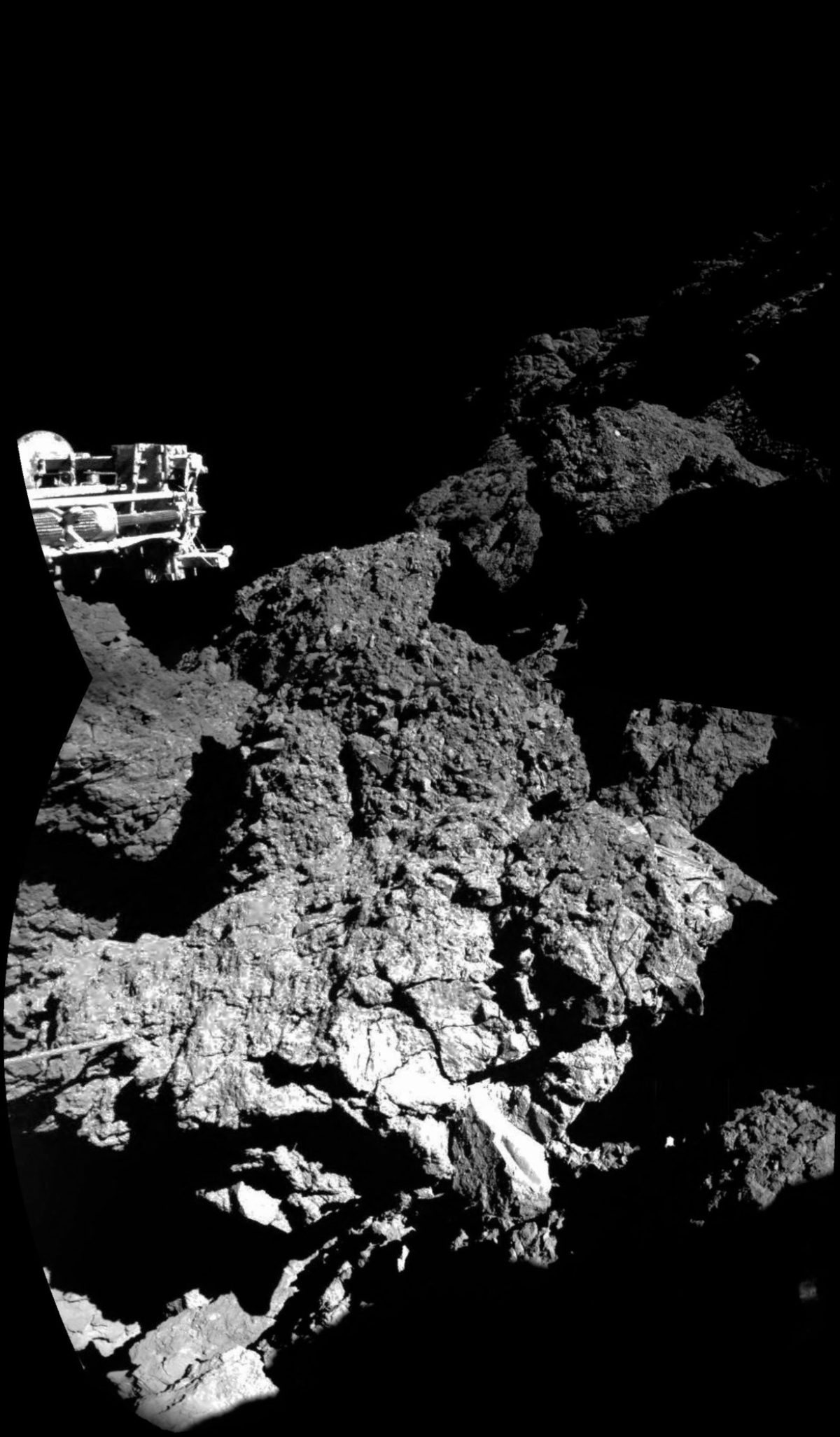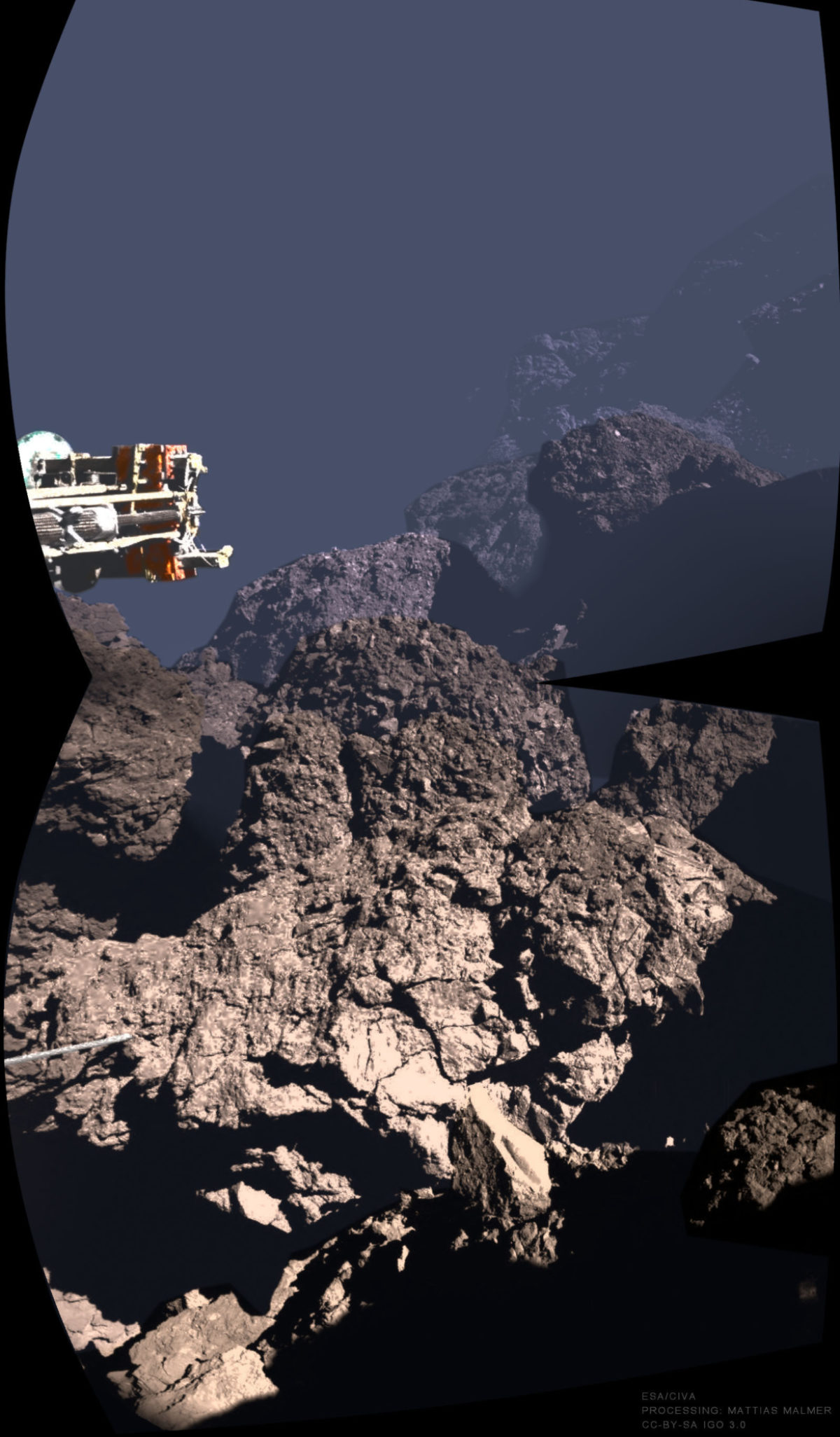Mattias Malmer • Sep 14, 2018
Feast your eyes on comet 67P's surface, with depth cues added
In November 2014, a little lander named Philae disconnected from the European Space Agency's Rosetta spacecraft and descended to comet 67P/Churyumov-Gerasimenko. Philae was supposed to fire a set of harpoons and attach itself to the surface, but things didn't go as planned. The spacecraft bounced, tumbled and eventually ended up in the shadow of a cliff. From there, it sent us wonderfully strange hints about where it was in the form of pictures.
The images showed a fractured jumble of jagged rocks so alien that it wasn't even obvious which way was up or down. People started assembling the images into panoramas to create something a little less confusing, and it helped — a little. On comet 67P, the atmospheric cues that our eyes have evolved to judge distances on Earth are not present, so everything has the same sharp contrast. This, and the fact that the surface is so sharp, makes the images almost fractal in nature.
I wanted to help my eyes perceive the landscape in a more familiar way, so I added some human-readable depth cues. I carefully segmented the landscape, following every edge that I could find, and based on the overlaps I created a very crude depth estimation. To simulate atmospheric scattering, I added increasing amounts of bluish tint and a loss of contrast as the landscape moves farther away from the camera.
Here's the result:

For me it brings the landscape alive a little, and helps me make sense of it.
Here's a comparison of the original mission panorama with the one I made:
Support our core enterprises
Your support powers our mission to explore worlds, find life, and defend Earth. You make all the difference when you make a gift. Give today!
Donate

 Explore Worlds
Explore Worlds Find Life
Find Life Defend Earth
Defend Earth



